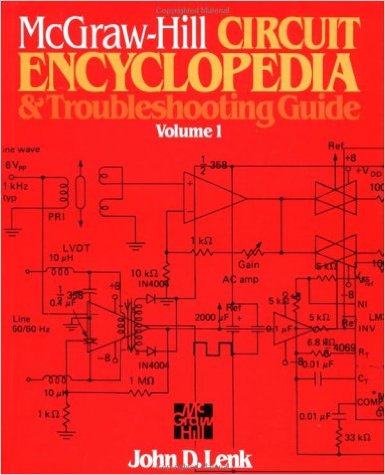A Comprehensive Guide to the McGraw-Hill Circuit Encyclopedia by John D. Lenk
Introduction
John D. Lenk's McGraw-Hill Circuit Encyclopedia is a comprehensive reference guide for electronic engineers, technicians, and hobbyists. This multi-volume series provides a vast array of circuit diagrams, explanations, and troubleshooting tips for a wide range of electronic circuits. This white paper will delve into the key features, benefits, and applications of this invaluable resource.
Key Features of the McGraw-Hill Circuit Encyclopedia
- Comprehensive Coverage:
- Diverse Circuit Types: The encyclopedia covers a wide range of circuit types, including analog, digital, power electronics, RF, and more.
- Detailed Explanations: Each circuit is accompanied by a detailed explanation of its operation, component functions, and design considerations.
- Practical Troubleshooting Tips: The series offers practical advice on troubleshooting common circuit problems and identifying potential failure points.
- Practical Design Insights:
- Real-World Applications: The encyclopedia provides numerous examples of how circuits can be applied in real-world scenarios.
- Design Considerations: The series covers important design considerations, such as component selection, power supply design, and layout techniques.
- Performance Optimization: The encyclopedia offers tips and techniques for optimizing circuit performance, such as noise reduction, power efficiency, and signal integrity.
- Easy-to-Use Format:
- Clear and Concise Explanations: The information is presented in a clear and concise manner, making it easy to understand.
- Well-Organized Content: The encyclopedia is well-organized, with circuits categorized by function and application.
- Extensive Index: A detailed index allows users to quickly find specific circuits or topics.
Applications of the McGraw-Hill Circuit Encyclopedia
- Electronic Design and Development: Engineers and technicians can use the encyclopedia to design and develop new electronic circuits.
- Circuit Troubleshooting and Repair: Technicians can use the encyclopedia to diagnose and repair faulty circuits.
- Education and Training: Students and hobbyists can use the encyclopedia to learn about electronic circuits and their applications.
- Research and Development: Researchers can use the encyclopedia as a reference source for exploring new circuit ideas and techniques.
Benefits of Using the McGraw-Hill Circuit Encyclopedia
- Saves Time and Effort: By providing a wealth of information in one place, the encyclopedia saves time and effort in researching and designing circuits.
- Improves Design Quality: The encyclopedia helps engineers and technicians design more reliable and efficient circuits.
- Enhances Troubleshooting Skills: The encyclopedia provides practical tips and techniques for troubleshooting circuit problems.
- Fosters Innovation: The encyclopedia inspires creativity and innovation by providing a vast array of circuit ideas and techniques.
Conclusion
The McGraw-Hill Circuit Encyclopedia is an invaluable resource for anyone working with electronic circuits. Its comprehensive coverage, practical design insights, and easy-to-use format make it an essential tool for engineers, technicians, and hobbyists alike. By leveraging the knowledge and expertise contained within this encyclopedia, users can design, build, and troubleshoot a wide range of electronic circuits.
References
- Lenk, J. D. (1993). McGraw-Hill Circuit Encyclopedia and Troubleshooting Guide. McGraw-Hill.
Note: To access the specific details and circuit diagrams, refer to the actual volumes of the McGraw-Hill Circuit Encyclopedia.



